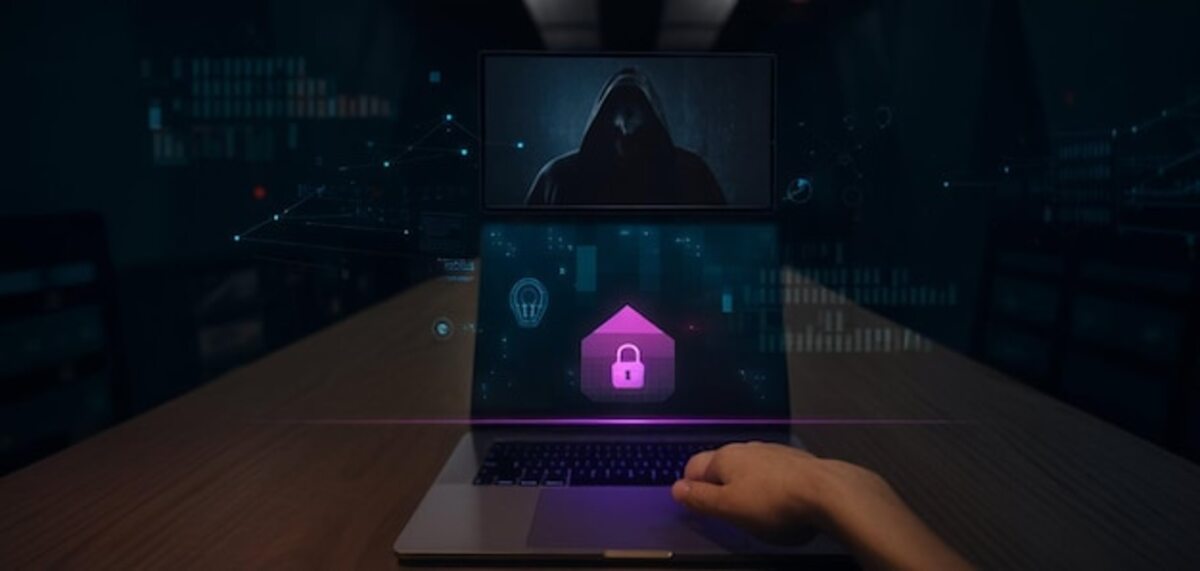Cybersecurity at home: protecting your digital life

Home cybersecurity is more crucial than ever, as our digital lives are vulnerable to constant threats. From smart devices to Wi-Fi networks, protecting our personal information has become a priority. In this article, we will explore effective strategies to safeguard your privacy and security in an increasingly interconnected world. Discover how small actions can make a difference and ensure that your digital space is as secure as your physical home.
The importance of cybersecurity in daily life
Cybersecurity in everyday life is essential for protecting our personal information and ensuring privacy in a world where technology is present in almost every aspect of our lives. From social media to online shopping, every digital interaction can be a target for cybercriminals. The growing reliance on smart devices and the Internet of Things (IoT) expands the gateways to our personal data, making it imperative that we adopt proactive measures to safeguard it. Without adequate cybersecurity, we could be exposing ourselves to fraud, identity theft, or unauthorized access to our most sensitive information.
Moreover, the importance of cybersecurity extends beyond individual protection; it also affects our families and communities. Attacks on connected devices can compromise not only our privacy but also put other users on the same network at risk. For example, a poorly secured device could be used as an access point to infiltrate other home systems or even affect critical services like alarms or security cameras. Therefore, establishing safe habits and educating our loved ones about digital threats is essential for building a safer environment both inside and outside the home. In summary, taking care of our cybersecurity is a shared responsibility that contributes to collective well-being in this interconnected digital age.
2. Knowing the most common threats at home
The most common threats at home often begin with the vulnerability of our Wi-Fi networks. Most homes are equipped with routers that, if not configured properly, can become open doors for cybercriminals. The use of weak passwords or the lack of updates to the router's firmware are common mistakes that can facilitate unauthorized access to our network. Once inside, attackers have the ability to intercept personal data and access connected devices, which jeopardizes both our privacy and the security of our sensitive information.
Another significant threat comes from smart devices that have begun to become an integral part of our homes. From security cameras to virtual assistants, these gadgets can be attractive targets for hackers if not managed properly. Many users overlook the privacy and security settings offered by these devices, which can allow third parties to access personal information or even take control of them. Therefore, it is essential to be aware of the appropriate settings and ensure that each device is protected with strong passwords and regular updates. With greater awareness of these common threats, we can take proactive measures to safeguard our digital environment.
3. Essential steps to secure your Wi-Fi network
Securing your Wi-Fi network is a fundamental step in home cybersecurity. To start, it is crucial to change the default network name (SSID) and password provided by your internet service provider. Choose a strong password that combines uppercase letters, lowercase letters, numbers, and symbols. This will make it difficult for unauthorized access to your network and protect the sensitive information you transmit through it. Additionally, consider disabling SSID broadcasting so that other devices cannot easily detect your network.
Another vital aspect is enabling encryption on your router. Use at least WPA3 or, if not available, WPA2 to ensure that transmitted data is protected against potential interception. It is also advisable to regularly update your router's firmware, as these updates often include essential security patches to protect you against the latest vulnerabilities. Finally, periodically check the devices connected to your network; this will allow you to identify any unauthorized access and take immediate action if necessary. Implementing these steps can provide an additional layer of security to your digital environment and keep your personal data protected against potential threats.
4. Security in smart devices: what you need to know
Security in smart devices is a fundamental aspect of home cybersecurity. With the growing popularity of gadgets like security cameras, smart thermostats, and virtual assistants, it is crucial to understand the risks associated with their use. These devices are often connected to the Internet and can be accessible from anywhere, making them potential gateways for cybercriminals. Ensuring that these devices are protected by strong and unique passwords is an essential first step. Additionally, keeping firmware and applications updated helps to close vulnerabilities that could be exploited.
Another important aspect to consider is the configuration of the Wi-Fi network in your home. Most smart devices connect through this network, so having a secure network is vital to protect your personal information. Changing the default name of the router and setting a strong password are best practices to make unauthorized access more difficult. You can also segment your network by creating a separate network exclusively for your smart devices; this not only adds an additional layer of security but also minimizes risks if one of your devices were to be compromised. Remember: investing time in digital security today can prevent bigger problems tomorrow.
5. How to create secure passwords and manage them properly
Creating secure passwords is a fundamental step in protecting our digital lives. It is important that passwords are complex enough, combining uppercase and lowercase letters, numbers, and special characters. A good practice is to opt for long phrases that are easy to remember but difficult to guess. Additionally, avoiding the use of personal information, such as birthdates or names of family members, can help make them less predictable. Remember also to change your passwords regularly to minimize the risk of unauthorized access.
Properly managing your passwords is just as crucial as creating them. Using a password manager can be an effective solution to store and organize all your keys in one place, thus avoiding the temptation to reuse passwords or write them down in insecure locations. Many managers also offer the option to generate random and unique passwords for each account you use. Finally, enabling two-factor authentication whenever possible adds an extra layer of security, thus protecting your information even if a password is compromised.
6. Protection against malware and viruses: essential tools
Protection against malware and viruses is an essential aspect of cybersecurity at home. Digital threats are becoming increasingly sophisticated, and attacks can come from various sources, such as malicious emails, compromised websites, or even seemingly harmless applications. To safeguard your digital life, it is crucial to have robust tools that detect and eliminate harmful software before it wreaks havoc on your devices. Reliable antivirus software, antimalware programs, and firewalls are just a few of the options available that provide solid defense against these threats.
In addition to installing security software, it is crucial to keep it regularly updated to combat the latest variants of malware. Many antivirus providers offer automatic updates that ensure your system is always protected with the most recent definitions. Complementing these tools with good practices, such as avoiding clicking on suspicious links or downloading files from unverified sources, can further strengthen your defense. Remember that prevention is key: by adopting a proactive approach to cybersecurity, you can protect not only your personal data but also the digital well-being of your entire family.
7. The relevance of security software and regular updates
Home cybersecurity is not only about protecting individual devices but also about implementing robust security software that acts as a first line of defense against potential threats. This type of software is essential for detecting and neutralizing viruses, malware, and other intrusions that could compromise the integrity of your home network. A good antivirus or security suite not only protects your devices but also offers additional features such as firewalls and parental control tools, allowing you to better manage who accesses your personal information.
Regular software updates are essential for maintaining security. Developers release periodic updates to fix detected vulnerabilities and improve the program's functionality. Ignoring these updates can leave doors open for cybercriminals, facilitating their access to your personal data. Therefore, it is crucial to establish a habit of frequent and automatic checking of these updates to ensure that you are using the most secure and efficient versions of the available software. By doing so, you strengthen your digital defense and protect what you value most in your digital life.
8. Digital education: fostering safe habits within the family
Digital education is essential for developing safe habits at home and ensuring that all family members become responsible technology users. It is important to establish an environment where conversations about cybersecurity are open and ongoing, allowing both adults and children to understand the risks associated with internet use. Starting these discussions at an early age helps cultivate a critical mindset towards the content they consume and share, as well as promoting safe practices, such as using strong passwords and verifying sources before clicking on links.
Additionally, family rules can be implemented regarding the use of digital devices that include specific schedules for their use and designated spaces for online activities. This not only promotes a healthy balance between digital and real life but also allows for better supervision of online interactions. Through practical workshops or educational resources, families can learn together about topics such as phishing, social media privacy, and the importance of regularly updating their devices. In this way, all members of the household become active guardians of their digital security, creating a family culture that prioritizes protection against cyber threats.



